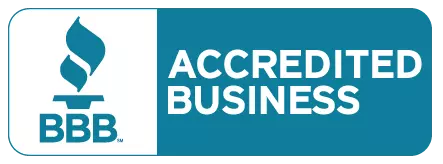Build Campaigns That Scale
Learn how to organize your Google Ads account for better control, cleaner data, and higher ROI — from campaigns to ad groups and keywords.
Introduction — Why Account Structure Matters
Your Google Ads account structure is the foundation of your advertising success.
A well-structured account helps Google understand your campaigns, improves ad relevance, increases Quality Score, and gives you more control over your budget.
At The Commerce Gear, we’ve seen hundreds of accounts across Egypt, GCC, and international markets.
The difference between profitable campaigns and wasted spend often comes down to one thing — how well the account is structured.
What Is Account Structure in Google Ads?
Google Ads structure follows a clear hierarchy:
-
Account level: Billing, users, and settings.
-
Campaign level: Budgets, locations, networks, bidding, and objectives.
-
Ad group level: Keywords, ads, and targeting options.
-
Ad level: The actual message users see.
When each layer is properly organized, your campaigns deliver stronger relevance and performance.
The Ideal Google Ads Structure
1. Separate Campaigns by Objective
Each campaign should have one clear goal — for example:
-
Sales (eCommerce or leads)
-
Brand Awareness
-
Remarketing
-
App Installs
Avoid mixing different objectives (e.g., sales and traffic) in one campaign — it confuses Google’s optimization system.
Pro Tip:
Structure by funnel stage:
-
Top of Funnel: Awareness (Display, Video)
-
Middle: Consideration (Discovery, Search)
-
Bottom: Conversion (Search, Shopping, PMax)
2. Organize Campaigns by Product Category or Service
For eCommerce:
-
Campaign 1: Gold Jewelry
-
Campaign 2: Diamond Jewelry
-
Campaign 3: Kids Jewelry
For Services:
-
Campaign 1: SEO Management
-
Campaign 2: Social Media Marketing
-
Campaign 3: eCommerce Development
This lets you assign budgets and measure performance per category.
3. Use One Match Type per Ad Group
Keep ad groups simple and focused.
Each ad group should target closely related keywords with the same intent.
For example:
Ad Group: Buy Gold Rings
-
[buy gold ring]
-
“buy gold rings online”
-
buy 18k ring
Avoid dumping dozens of unrelated keywords into one ad group — it kills relevance and Quality Score.
4. Follow the SKAG or STAG Model
There are two proven models for keyword grouping:
-
SKAG (Single Keyword Ad Group): One keyword per ad group for precise control.
→ Great for high-budget, high-value campaigns. -
STAG (Single Theme Ad Group): Multiple keywords around the same theme.
→ Easier to manage for larger accounts.
At The Commerce Gear, we often use a hybrid approach — SKAG for top performers and STAG for scaling efficiently.
5. Maintain Logical Naming Conventions
Clear names = easier optimization.
Example structure:
Country_Service_Goal_CampaignType
EGY_Jewelry_Sales_Search
KSA_Coffee_Leads_PMax
UAE_HomeAppliances_Traffic_Display
Avoid vague labels like “Campaign 1” or “Test Campaign” — you’ll lose track fast.
6. Separate Brand and Non-Brand Campaigns
-
Brand Campaigns: Target your brand name (e.g., “The Commerce Gear” or “Brown Hills Coffee”).
→ Lower CPC, higher CTR, high Quality Score. -
Non-Brand Campaigns: Target generic or competitor terms (e.g., “digital marketing agency Dubai”).
→ Higher CPC but new customer acquisition.
Separating the two ensures accurate performance tracking.
7. Use Campaign Experiments and Labels
-
Experiments: Test different bidding strategies or ad copies without affecting the original campaign.
-
Labels: Tag campaigns (e.g., “High Margin,” “Black Friday,” “Remarketing”) for fast reporting and segmentation.
This structure helps when managing large accounts or multi-country operations — like The Commerce Gear’s clients in Egypt, KSA, and UAE.
Budget & Bidding Structure Tips
-
Assign separate budgets per objective (don’t mix awareness and conversion in one campaign).
-
Keep bid strategies consistent within similar campaign types (e.g., all search campaigns use Target CPA).
-
Avoid splitting budgets too thin — Google needs enough data per campaign to optimize.
-
Use portfolio bid strategies to share learnings across similar campaigns.
Account Hygiene Best Practices
-
Review search terms weekly to add negative keywords.
-
Pause underperforming ads after 1,000+ impressions and low CTR.
-
Regularly archive inactive ad groups or outdated campaigns.
-
Check conversion tracking and UTM parameters monthly.
-
Audit your naming and label structure quarterly.
Common Mistakes to Avoid
-
Mixing multiple products and goals in the same campaign.
-
Ignoring ad group relevance (too many broad keywords).
-
Forgetting geographic segmentation.
-
Using inconsistent naming or no labels.
-
Failing to archive old data — clutter kills clarity.
Fixing these can increase CTR and Quality Score by 20–30%.
FAQs — Google Ads Account Structure
Q1: How many campaigns should I have in my account?
A: It depends on your products and goals. Start with 3–5 campaigns (Brand, Non-Brand, Remarketing, Shopping, PMax) and expand as you scale.
Q2: How many ad groups per campaign is ideal?
A: Typically 5–10 ad groups per campaign, each containing 5–15 related keywords.
Q3: What’s better — SKAG or STAG?
A: SKAG offers precision, STAG offers scalability. Use SKAG for top performers, STAG for broad coverage.
Q4: Should I create separate campaigns for each country?
A: Yes — always separate by region to control currency, language, time zone, and bidding efficiency.
Q5: Can I use the same ad copy across ad groups?
A: You can reuse high performers, but always tailor ad copy to match keyword intent and user search terms.
Conclusion — Structure for Clarity, Optimize for Scale
The right Google Ads structure gives you clarity, control, and scalability.
It makes your campaigns easier to manage and Google’s algorithms more efficient.
At The Commerce Gear, we rebuild underperforming accounts with data-driven architecture — organizing campaigns by intent, category, and country to maximize performance and reporting clarity.
Get a Free Google Ads Account Audit
📩 Let’s Restructure Your Google Ads for Better ROI
Our team will analyze your current account setup and show you how to improve structure, tracking, and results.
👉 Contact The Commerce Gear




